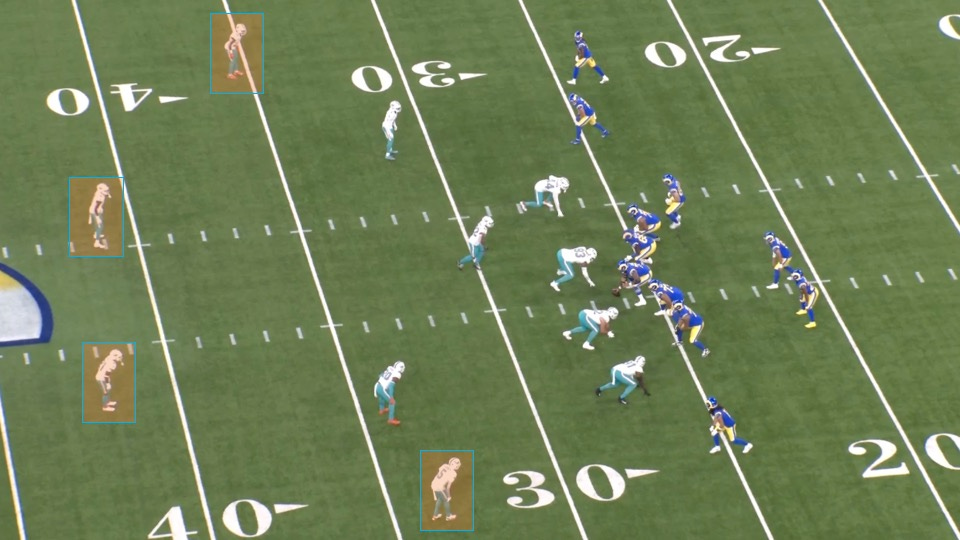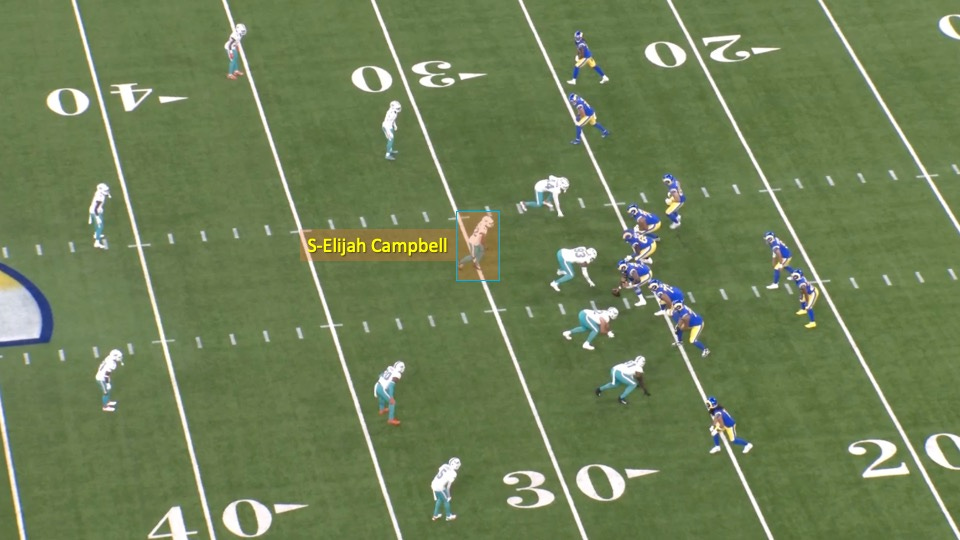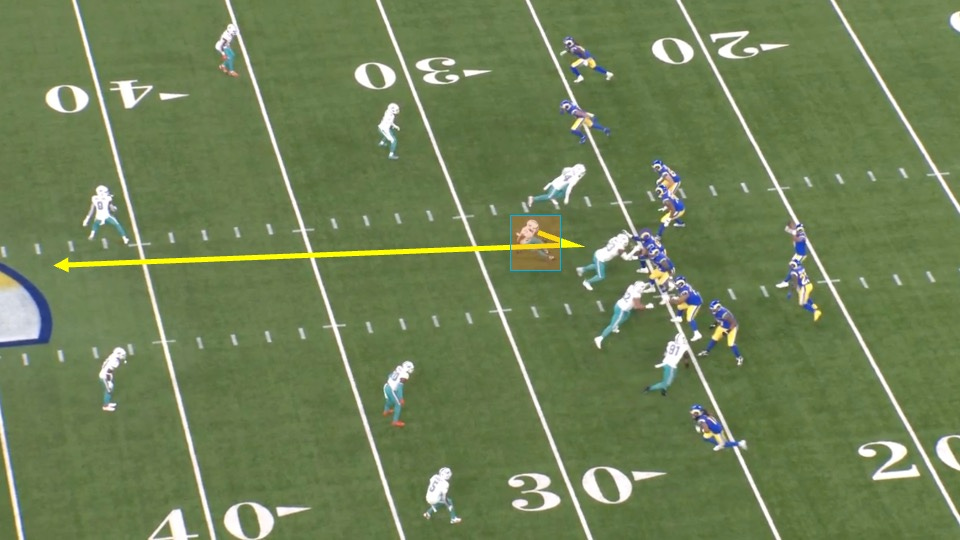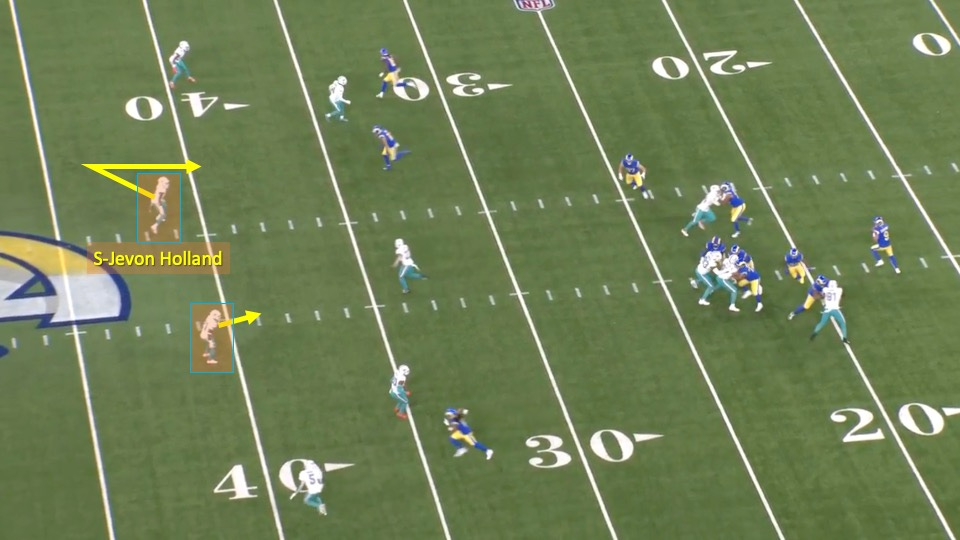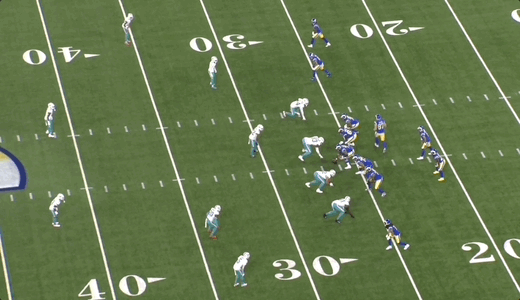At 2-6, the Dolphins desperately needed a win against the Rams on Monday night. While the offense struggled to find its footing, Anthony Weaver’s defense stepped up in a big way. They held the Rams to just 15 points and kept them out of the end zone altogether.
3rd down was where this game was won, though. Not only did Miami hold the Rams to just 3 conversions on 12 attempts, they racked up 3 sacks and an interception on the key down. They did it primarily with disguise and post-snap movement.
The disguise didn’t necessarily fool Stafford. But it did make him have to decipher more post-snap, which meant it took him longer to process, and that made all the difference. The disguise also kept the Rams from getting into the best possible plays and protections pre-snap, as you’ll see below.
Just look at this first example on a 3rd-and-13. What does that coverage look like to you?
Possibly quarters or quarter-quarter-half, right? Perhaps it would be cover-3 with the two deep safeties rotating?
What if I told you it was cover-3, but the deep middle third defender was this guy:
There is no way Matthew Stafford thought that Elijah Campbell would end up racing to the deep middle of the field here. But that’s exactly what he did after quickly bluffing a blitz at the snap:
The other aspect of this coverage to focus on was the double robbers. Those two deep safeties at the snap would creep up to the first down marker and end up as the hook-curl defenders. Safety Jevon Holland even bluffed like he would be dropping out into cover-2 before stepping up:
Stafford eventually looked to the deep curl to his right, but that would be taken away by Holland. He was forced to check it down instead. The Dolphins had won the snap:
On this next play, a 3rd-and-7, the Dolphins would use more disguise to force hesitation in Stafford, ultimately resulting in a sack.
First, look at the pre-snap coverage. This time, Miami started in single-high:




